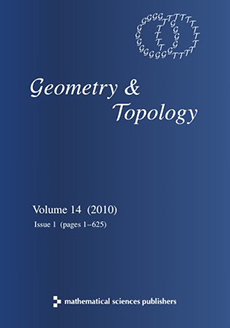Abstract
Kuranishi structures were introduced in the 1990s by Fukaya and Ono for the purpose of assigning a virtual cycle to moduli spaces of pseudoholomorphic curves that cannot be regularized by geometric methods. Their core idea was to build such a cycle by patching local finite-dimensional reductions, given by smooth sections that are equivariant under a finite isotropy group.
Building on our notions of topological Kuranishi atlases and perturbation constructions in the case of trivial isotropy, we develop a theory of Kuranishi atlases and cobordisms that transparently resolves the challenges posed by nontrivial isotropy. We assign to a cobordism class of weak Kuranishi atlases both a virtual moduli cycle (a cobordism class of weighted branched manifolds) and a virtual fundamental class (a Čech homology class).
Citation
Dusa McDuff. Katrin Wehrheim. "Smooth Kuranishi atlases with isotropy." Geom. Topol. 21 (5) 2725 - 2809, 2017. https://doi.org/10.2140/gt.2017.21.2725
Information





